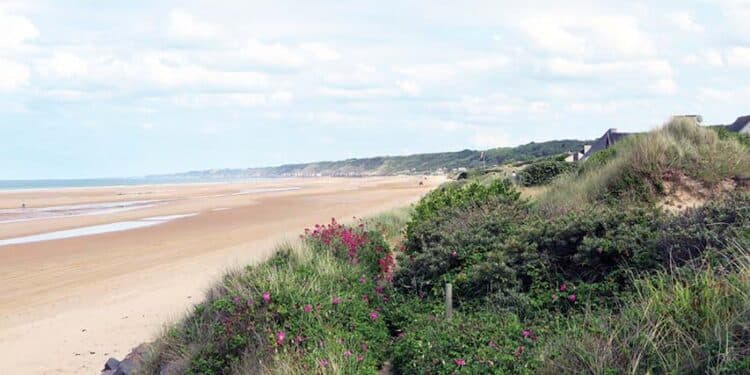Story & Photography by Kyle Shea
On June 6, 1944, one of the greatest military operations in the history of humanity began. On one side was the Third Reich, a Nazi-controlled Germany seeking expansion and world domination. On the other side was an alliance of powerful free nations and armies from occupied countries seeking to be liberated from Nazi control. Between them was the English Channel, a body of water ranging from 150 miles wide to almost 20 miles wide depending on where you are at. Armies had crossed it before many times, including William the Conqueror during his bid for the throne of England, and the kings of England did so many times during the Hundred Years’ War for their claim to the throne of France. Napoleon had considered trying to cross the Channel to invade England, and Hitler had planned to do this as well but instead chose to invade the Soviet Union—a decision that would come back to haunt him.
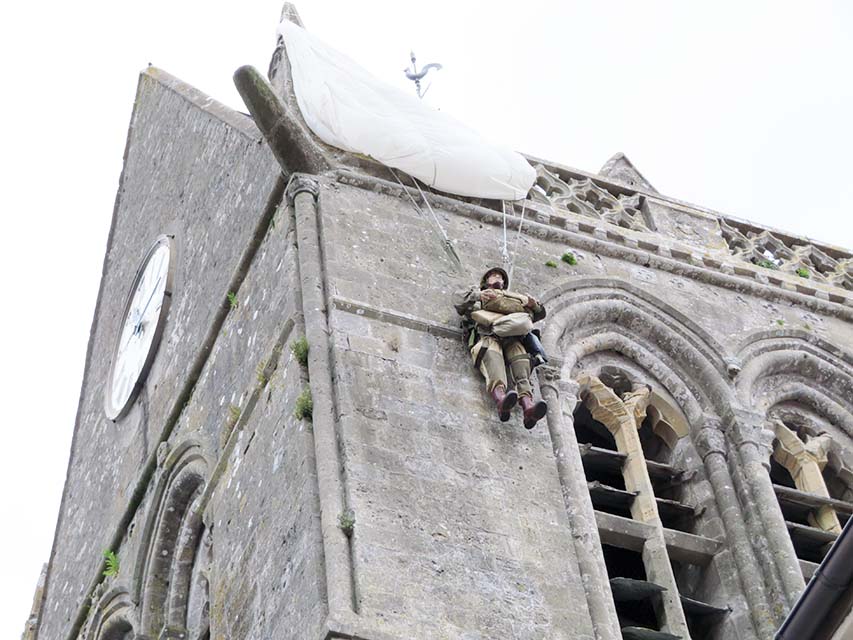
Now, an army of free men and women was about to cross that cold Channel and liberate the people of France. First came the buildup, where soldiers, tanks, trucks, aircraft and other equipment in the thousands and millions were gathered in England. A special fake army was created in the port of Dover opposite the port of Calais to distract the Germans, while the real invasion force was prepared opposite the shores of Normandy.
This was D-Day, and it was a success. The first to land were the American and British paratroopers, who captured important strategic positions behind the beaches like the now-named Pegasus Bridge and the German battery at Brécourt Manor. Then tens of thousands of American, British and Canadian soldiers stormed the beaches of Normandy, divided into five sections codenamed Utah, Omaha, Juno, Gold and Sword.
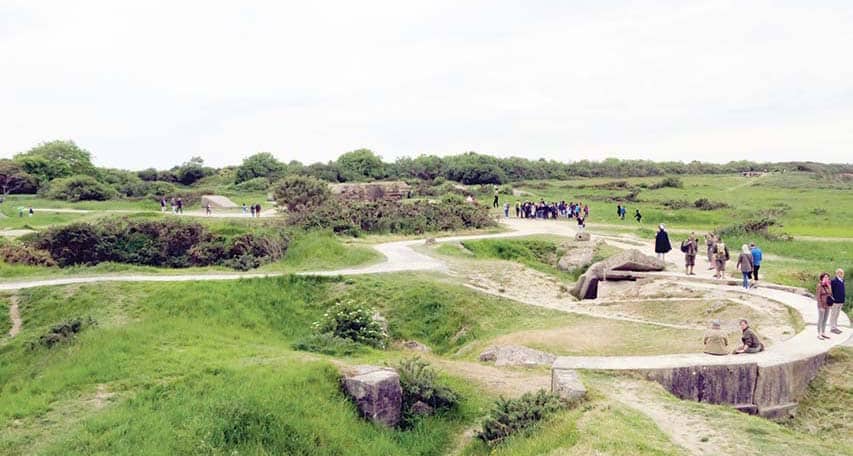
Americans took Utah and Omaha Beaches in the West. Utah was the beach with the least casualties on D-Day, while Omaha was the worst. It was the only beach that seemed to be in question, but then the navy got dangerously close to the beaches and fired directly on the German defenses. This allowed the Ameri-cans to get off beaches and advance a little bit inland. Between Utah and Omaha Beaches, the 2nd Ranger Battalion climbed the steep cliffs beneath Pointe du Hoc and took out the German defenses there. Meanwhile, the British landed at Sword and Gold Beaches, facing tough resistance. Between the two beaches was Juno Beach, where the Canadians fought a determined enemy and suffered heavy casualties. By the end of the day, all the beaches were taken, and more soldiers were on their way.
Yet the battle for Normandy was far from over. As the Allies advanced inland, they encountered an almost impossible obstacle in the form of the hedgerows. Since the times of the Romans, they were made with stones and dirt and were used to set boundaries between farms and keep livestock in. Bushes and trees grew on them, making it impossible for the Allies to see what was on the other side. Tanks were easy targets down the narrow roads, and when they tried to climb over the top of the hedgerows, their undersides—the weakest part of the tank—were exposed and made easy targets for anti-tank weapons.
Finally, the Allies took the anti-tank obstacles, called hedgehogs, which were on the beaches in Normandy, cut them up and put them on the front of tanks to be used like a plow. With the help of these Rhino Tanks, the Allies broke through the hedgerows and advanced inland. Soon, Saint-Lô, Caen, Cherbourg and other cities in Normandy were under Allied control, and on August 25, 1944, Paris was liberated by Free French forces. The next year, 1945, Hitler committed suicide on April 30, and the German Reich surrendered on May 2, ending the war for the Allies in Europe.
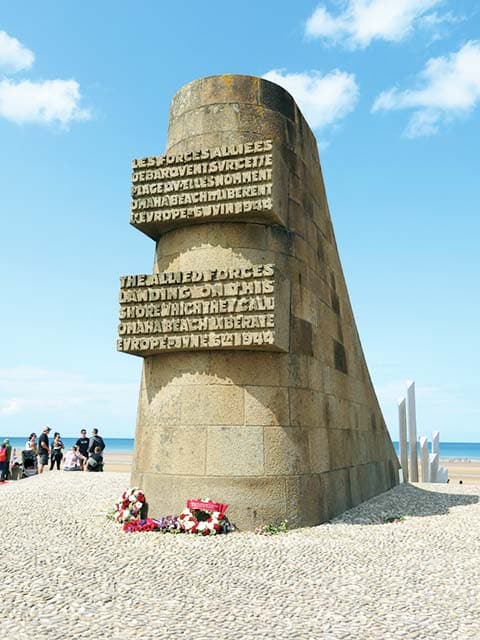
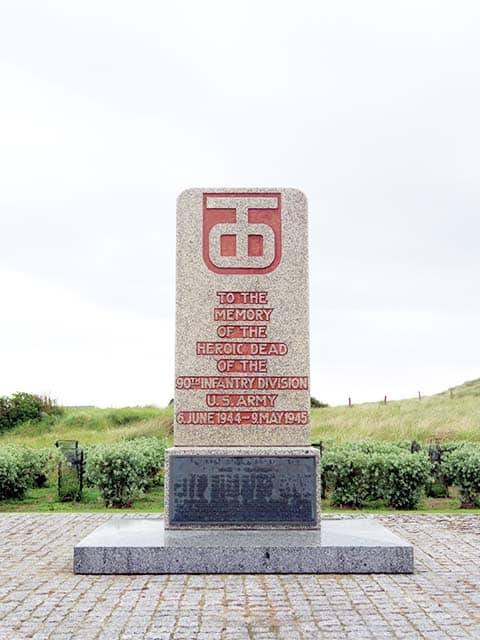
The Tour
The year 2019 marked the 75th Anniversary of the D-Day Landings, and I wanted to go. It was a once in a lifetime opportunity, like the anniversary of the Battles of Hastings or Waterloo, which I sadly missed, or the Battle of Agincourt, which I did not. And there was no way on earth I was going to miss this. Through Semper Fi magazine, my sister and I learned about Military Historical Tours, which was doing a special tour like they do every year on the anniversary. They were doing two tours, one that started on May 28 and one that started on June 2. I signed up for the shorter tour and bought my tickets to France.
Day 1
On June 3, the first day of our tour, we stopped at Memorial Pegasus in Ranville, France. On display was the original bridge itself, a bascule bridge designed to lift up to let ships pass underneath it. It crossed the Caen Canal and was also named after the neighboring town of Bénouville. It was replaced in 1994 and was eventually sold to Memorial Pegasus. Also on display at the museum was a replica of an Airspeed Horsa and a part of a Bailey bridge, as well as a few other military vehicles and indoor displays.

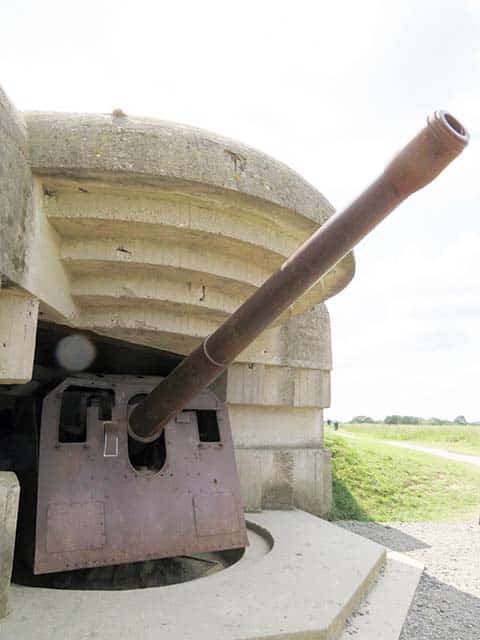
Our next destination was Juno Beach, where we stopped briefly to look around. We then headed up to the Arromanches-les-Bains, where one of the Mulberry harbors was installed. Mulberry harbors were portable harbors developed by the Allies, who believed it was easier than trying to take one of the heavily defended ports on the French coast. It turned out to be a great idea, and the Allies were able to move large amounts of ammunition, vehicles and other supplies through one of the harbors until other ports were captured. The other harbor at Omaha Beach had been heavily damaged, and the Allies could not use it.
Before we entered the town, we arrived at an orientation table that gave us a view of the town and the beaches there. A German radar station was located here, and only the base remains. No troops landed there on D-Day, and the town was taken by land. Near the table was a monument to the Royal Engineers and a weird tank that had been painted all over. The Arromanches 360o Museum-Cinema is also there with a special movie.
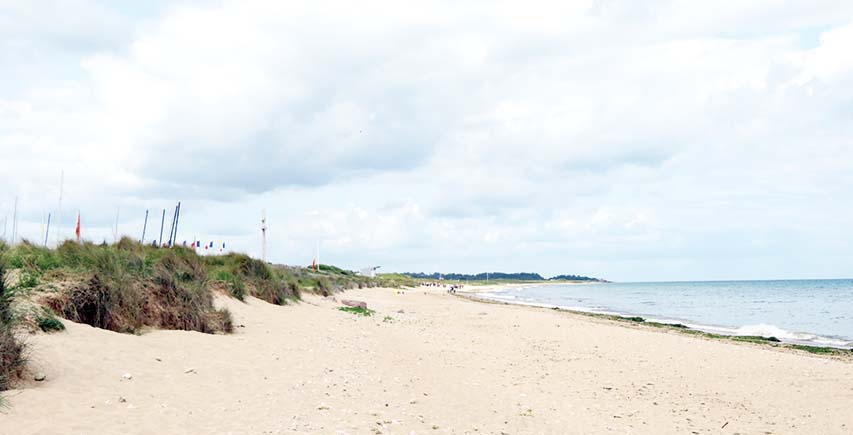
We stayed in Arromanches for lunch, then headed up to Longues-sur-Mer Battery. This battery was located between Omaha and Gold Beaches and was a pain to the Allies on D-Day. It withstood heavy attacks by bombers and battleships, until it finally surrendered the next day. After seeing Longues-sur-Mer, we headed over to Omaha Beach, where we first stopped briefly at the landing site of the 29th Infantry Division, then stopped at the Signal Monument and the Les Braves Monument at Saint-Laurent-sur-Mer. We walked around for a moment and explored the beach a little before we moved on to the Charles Shay Memorial, a monument to the Native Americans and Native Canadians who fought in France in World War II. We then visited the U.S. 2nd Division Monument on a hill overlooking Omaha Beach and made our way back to the hotel in Caen.
Day 2
On our second day, we headed up to the Overlord Museum. We were not there long, but I was still very impressed. Countless vehicles, uniforms, guns and other equipment form the American, British, Canadian, French and German Armies filled the museum, and the displays were crowded but well done. Outside were a number of other vehicles, including a large Sherman and a M10 Tank Destroyer, also known as a Wolverine. When we were done, we hopped back on the bus and drove up to one of the best parts of the whole tour.
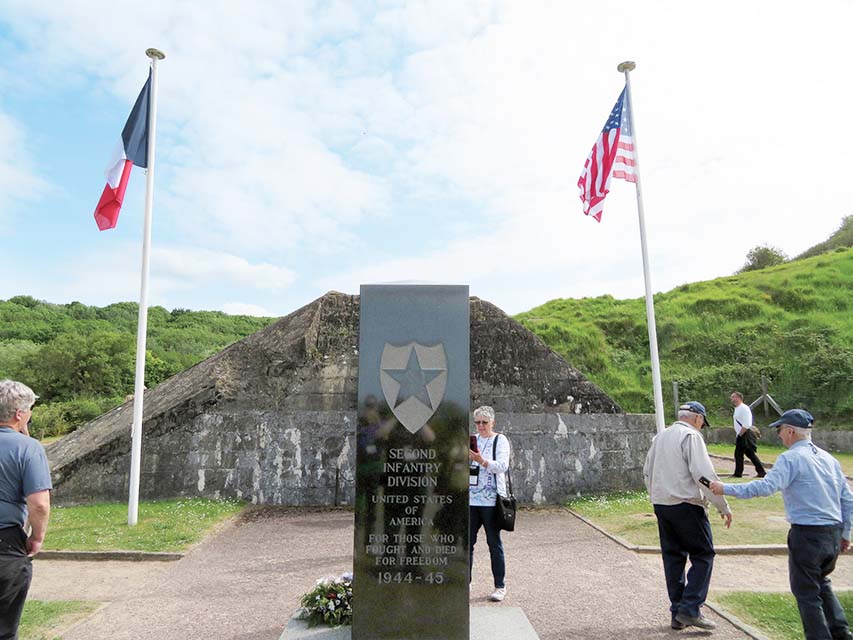
The Best Part of the Tour
To say I was amazed at Pointe du Hoc would be an understatement. I had heard about it before and even remember playing a video game where the player is a Ranger there, but I wish I had known more. All over the cliff are bunkers and craters. The craters were over three men deep and were hard to get in and out. The bunkers were large and extended underground. Just imagining the battle that took place here is amazing. The view from the cliff was impressive as well. I was unable to get a good picture of the monument there because of the large numbers of people, but I do plan on returning.
Throughout the tour, we met a few World War II veterans. They were almost always in wheelchairs and were escorted by friends and family. I shook a few hands of these brave men of the Greatest Generation and thanked them for their service to their country. Also, throughout the tour, we saw military vehicles and reenactors everywhere. Most were dressed as Americans, but I do remember seeing a few Canadians and British. I saw no one dressed up as German military, and I think we all know why.
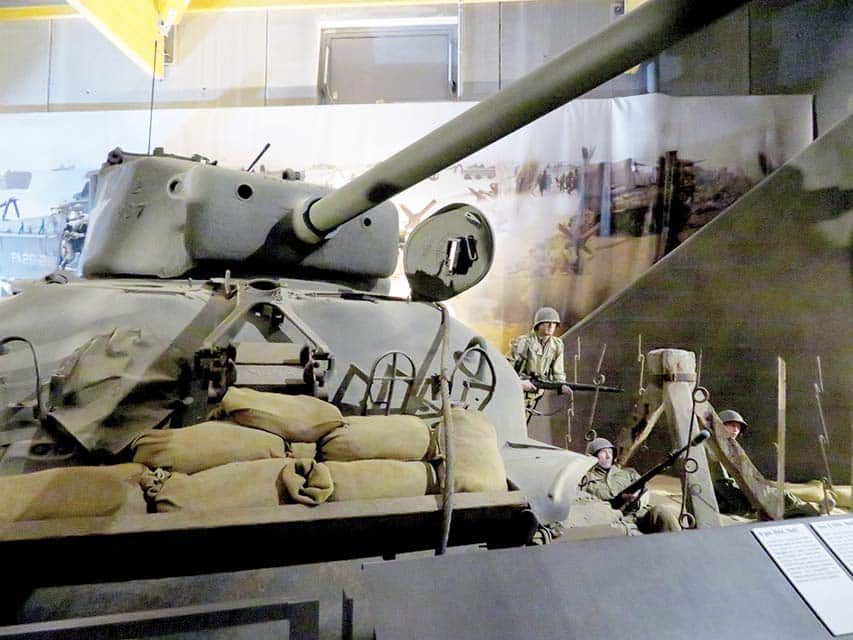
After Pointe du Hoc, we drove over to Utah Beach. The museum of Utah Beach is impressive, with a B-26 Marauder in a hanger. Outside the museum was a Higgins Boat that you could walk into. Next to it were a few monuments, including one to the Higgins Boat itself. There was a monument to the creator of the boat, Andrew Higgins. Not far away was a monument to the “Frogmen,” underwater divers whose job was to clear various obstacles. Another monument was dedicated to the 1st Engineer Special Brigade, and one to the fallen men of the 90th Infantry Division was nearby.
Our next stop was the Maisy Battery. This place had only been discovered a few years ago and had an interesting story behind it. It had been built by captured Poles and other prisoners of war to keep it secret from the French, and the way it was built made it hard for the battleships of the coast to hit it. American Rangers eventually captured it with a few wounded and none killed. The operation was kept secret until a few years ago, when it was discovered by a British historian.
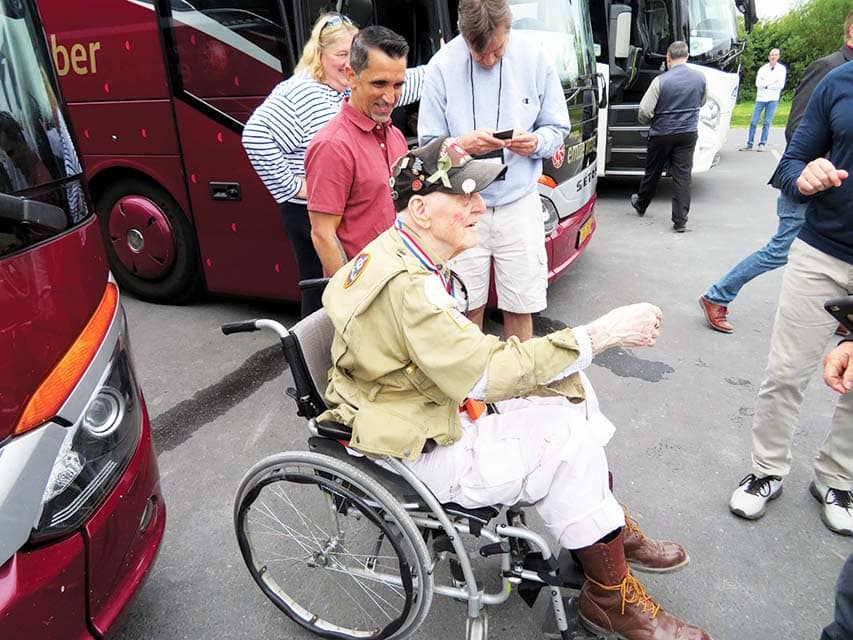
Day 3
On June 5, we first visited Brécourt Manor. Here, Easy Company from the 101st Airborne took a German artillery battery with tactics that are still in use today. There was a monument to the 101st Airborne Easy Company that stands on the side of the road. This engagement was made famous by the television series Band of Brothers, which chronicles the story of Easy Company and all the engagements they went through. There was actually a television system on the bus, and they played “Band of Brothers” while we drove through the Norman countryside.
Our next stop was the town of Sainte-Mère-Église. If anyone has seen “The Longest Day,” this is where the paratrooper John Steele was trapped on the church and could only watch from above as the fighting occurred in the town. He was later captured, but he escaped and helped capture the town. Today, every year, the town hangs a replica of John Steele on the church.
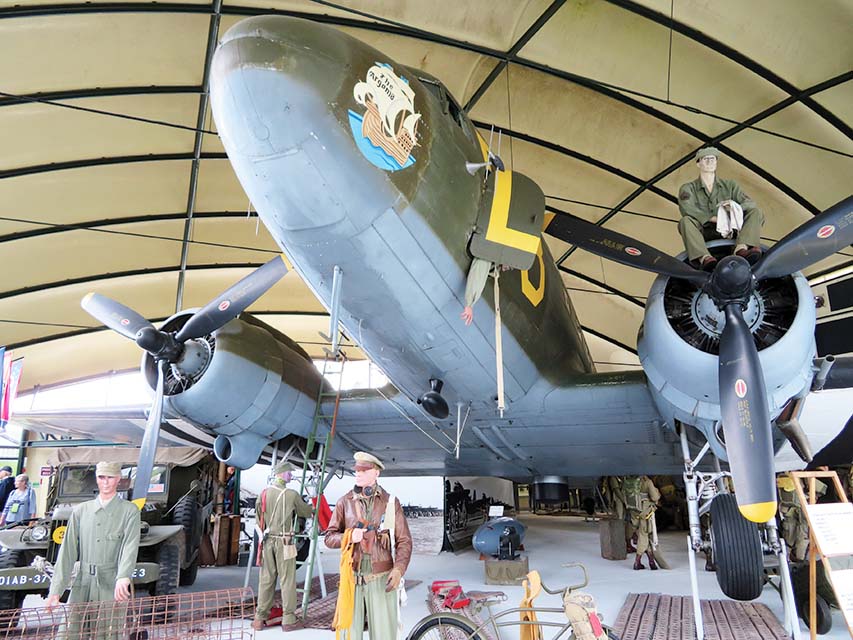
There is an outstanding museum at Sainte-Mère-Église, called the Airborne Museum. Opened in 1964, the buildings are built like parachutes. It has a CG-4A Glider you can walk into and a C-47 Skytrain which you can look down upon from a balcony. Another building has a special exhibit that allows visitors to relive D-Day as a paratrooper, starting in a plane that feels like it is in the air with model buildings below.
Sainte-Mère-Église is a nice little town. It was full of reenactors and tourists, as well as military vehicles. One diner had a dummy para-trooper hanging from the ceiling, and the shops were full of World War II souvenirs and other treats. In the church is a stained glass window displaying American paratroopers landing in the presence of Christ and the Virgin Mary.
The tour bus then took us to Bayeux, home to the Bayeux Tapestry, which tells the story of the conquest of England by William, Duke of Normandy, also known as William the Conquer. The tapestry was created by someone close to William and tells the story of how and why he invaded England in 1066. It is amazing to look at, and we were given a special audio device that told us the story on the tapestry. It was housed in a good museum that had artifacts from the time of William and miniature replicas of the buildings from the time. We then returned to our hotel for the night.
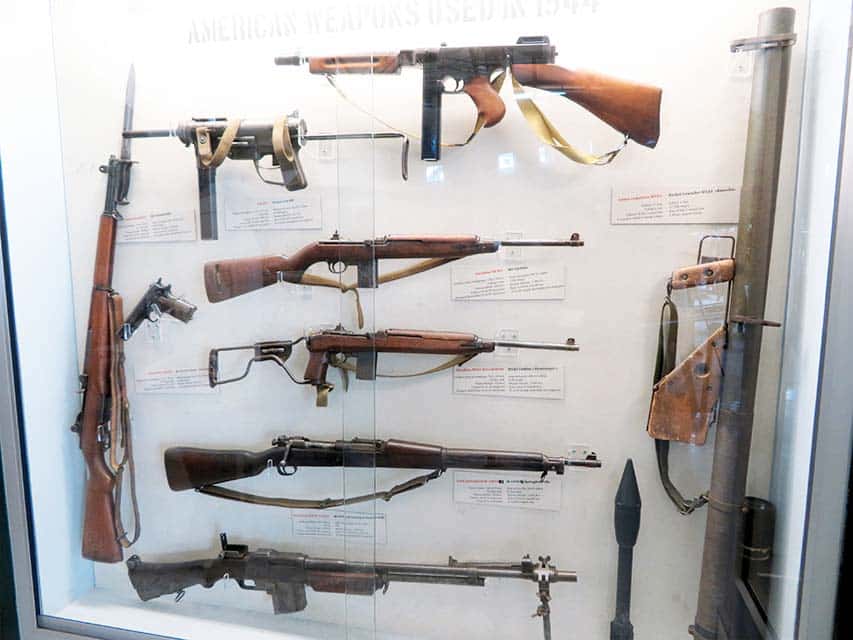
Day 4—The Big Event
On June 6, Day 4, we drove to the Normandy American Cemetery and Memorial for the 75th Anniversary Event. We arrived early and were able to walk around the cemetery paths. From the front of the cemetery to the chapel in the center there was seating for thousands of people and large television sets to see the front. We eventually sat down and waited for the presidents of France and the United States to arrive. At one point, the screens showed the few remaining veterans of that fateful day in 1944 and all gave a standing ovation as the camera moved across the few remaining of the Greatest Generation. While we waited for the world leaders, two bands, an American one and a French one, took turns playing songs from both the United States and France.
Then President Donald J. Trump arrived with his wife, First Lady Melania Trump. A little while later, French President Emmanuel Macron and his wife Brigitte Macron arrived, and the two made their way to the front of the cemetery, where a massive podium was set up. The podium covered the bronze statue called “The Spirit of American Youth Rising from the Waves,” which shows a young man rising out of the water. It also covered up maps that showed the battle of Normandy on the wall.
French President Emmanuel Macron was the first of the two world leaders to speak. It was a good speech, where he praised the Americans and other Allies who fought on D-Day. “We know what we owe to you veterans. Our freedom. On behalf of my nation, I just want to say, thank you.” That day, Macron awarded five American veterans the Legion of Honour, the highest award that France could give.
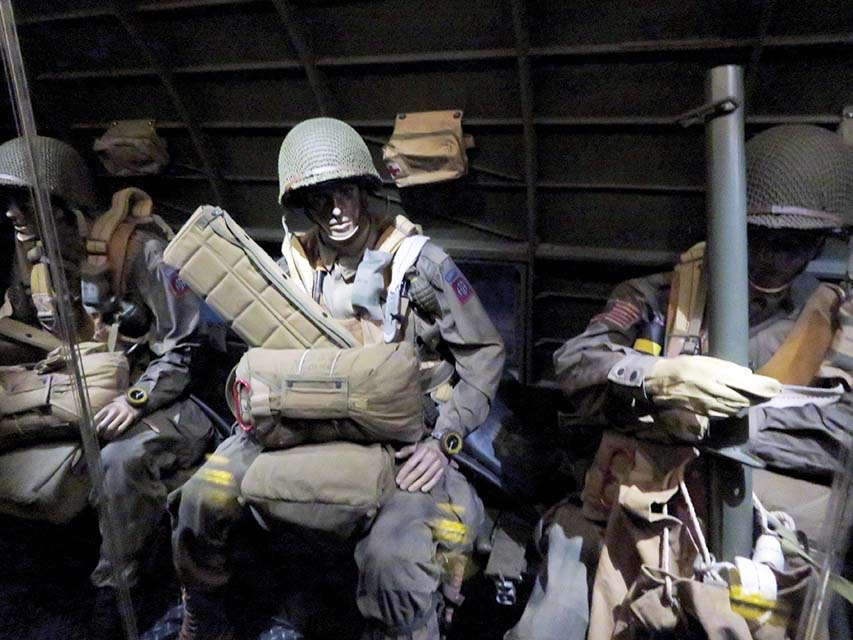
Then it was President Trump’s turn to speak. He praised the men who died that day and the men who continue to live. “You’re the pride of our nation. You are the glory of our republic. And we thank you from the bottom of our hearts.” He thanked the veterans personally and shook their hands. “In defeating evil, they left a legacy that will last forever.”
After the speeches, both presidents and their wives walked over to the side of the cemetery facing the sea and watched as planes flew overhead. The first to fly over was a more modern transport plane, which was followed shortly after by restored World War II bombers and transport planes. Then four jets flew over, and one broke away, performing the Missing Man Formation, the Aerial salute for fallen heroes. It was soon followed by a group of jets who used colored smoke to create the tricolor flag of France in the sky.
After the festivities, we waited a while for the bus and then returned back to the hotel. We were then treated that night to steaks from local cattle. Normandy is famous for its steaks and for a number of other dairy products, especially its cheese and butter. It is also famous for cider, poiré (perry), fish and apples.
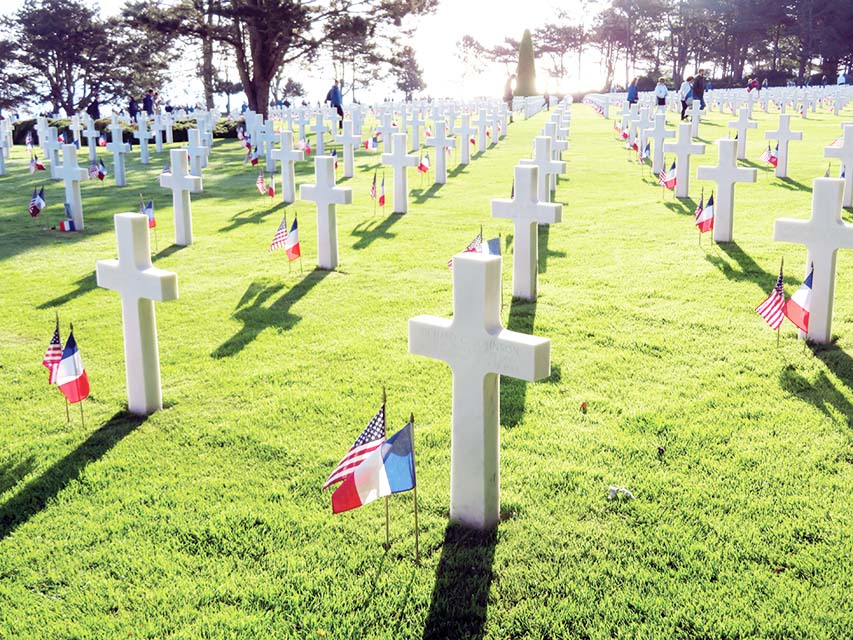
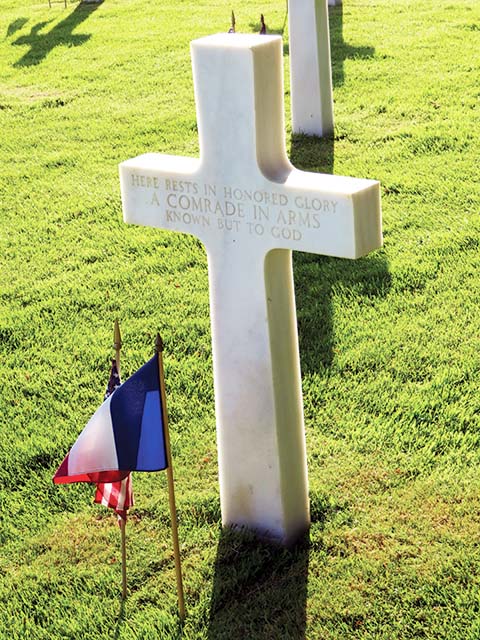
Day 5
On June 7, Day 5, we went to the city of Rouen. We first visited the Cathedral Notre-Dame and explored the insides. In this Cathedral is buried the heart of Richard the Lionheart and Rollo the First to rule Normandy and ancestor to William the Conqueror and other kings and queens of England. We then walked through Rouen to where Joan of Arc was burned to the stake. We walked under the Gros Horloge, a large clock inserted into the side of a Renaissance arch. We arrived at the spot Joan was burned, now under a large pillar with a cross on it. Next to it is a modern church named after the saint.
We shopped around Rouen for a little bit before driving to our next destination, the home of Claude Monet, one of France’s greatest artists. The house is filled with great paintings, both by Monet and by other artists. The gardens are amazing as well, a perfect place to sit and relax.
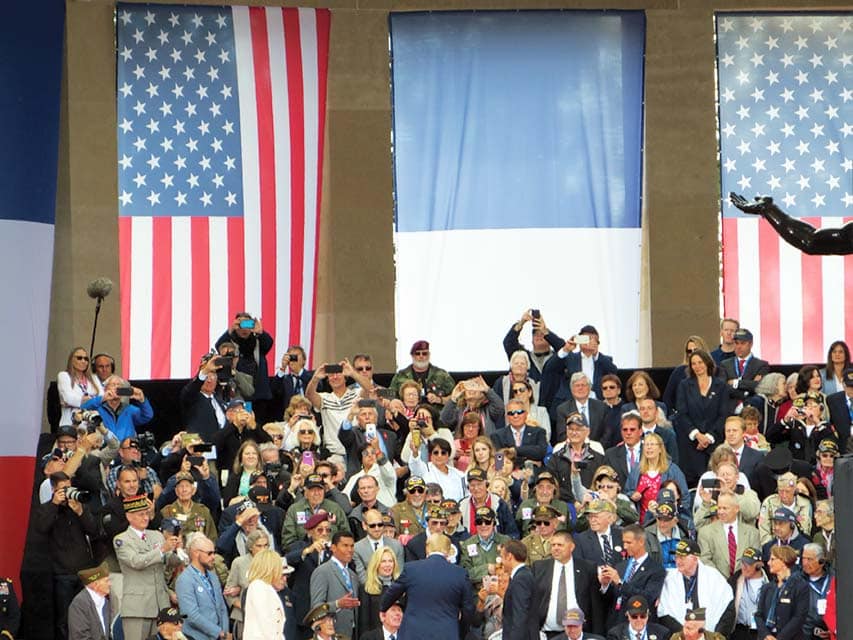
Final Stop
Our next and final stop was Chateau de La Roche-Guyon, Rommel’s HQ during the Battle for Normandy. We did not stay long, but I did take a lot of pictures. It was a nice ending to a long journey. That night we arrived in Paris and said our goodbyes. I spent another day in Paris before returning home on June 10.
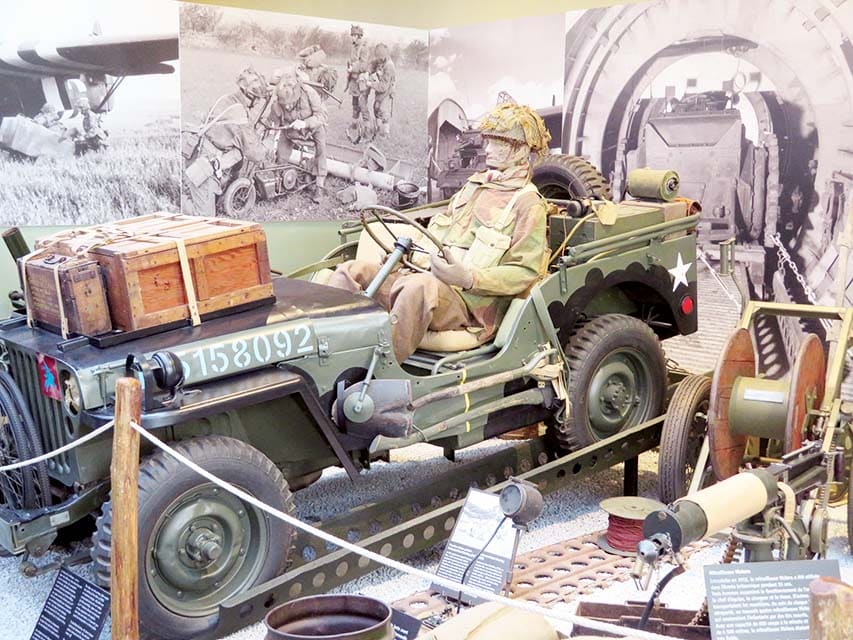
Au Revoir
The tour was outstanding, and the guides were nice and helpful. They were not controlling and let us have a bit of freedom. My fellow travelers were great as well. Most were veterans and enjoyed the tour a great deal. A special thanks to Shayne Jarosz, who answered all my questions and helped with the few problems I had. Another special thanks to Casey Feucht, who did much of the organizing for the tour. There were places and schedules we would never had gotten to if not for her.
As for Normandy itself, a few days were just not enough. There are so many museums, monuments, memorials and other sights to see in this part of France and not just involving World War II. I had a few regrets on this trip, and I plan to return to this wonderful land. Normandy’s history is a part of our history and should not be forgotten. If you have family and are planning a trip, take them to Normandy and always remember what you see here.
| This article first appeared in Small Arms Review V23N8 (Oct 2019) |



